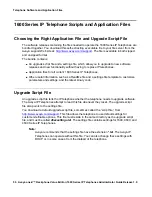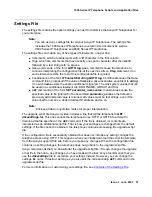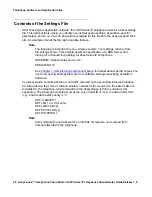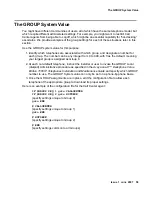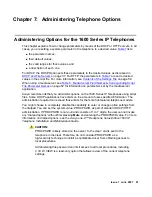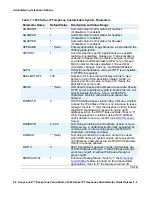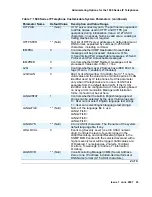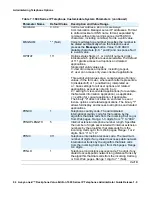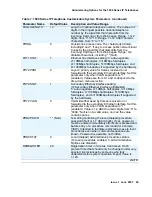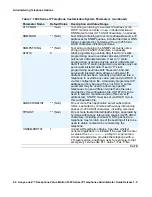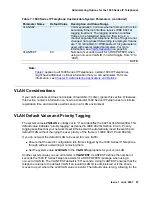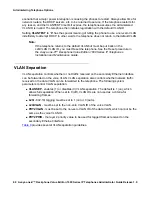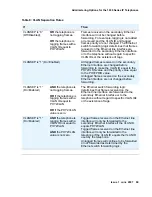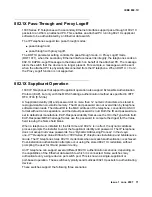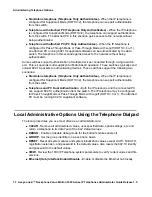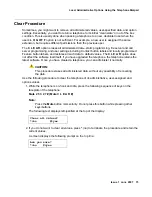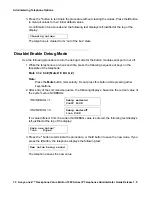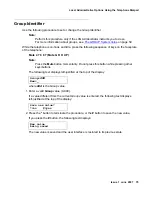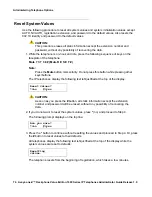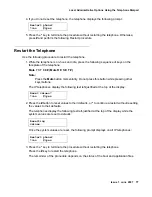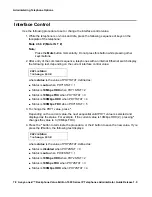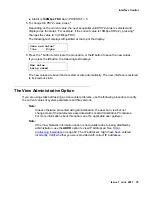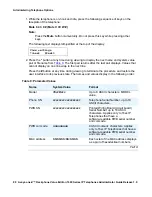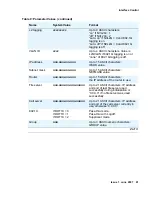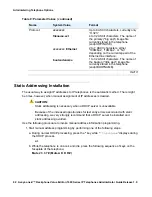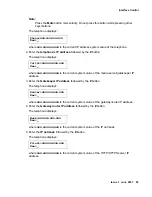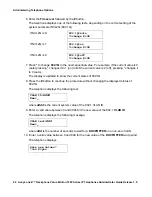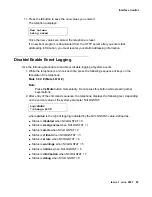
Administering Telephone Options
70 Avaya one-X™ Deskphone Value Edition 1600 Series IP Telephones Administrator Guide Release 1.0
DNS Addressing
The 1600 IP Telephones support DNS addresses and dotted decimal addresses. The telephone
attempts to resolve a non-ASCII-encoded dotted decimal IP address by checking the contents
of DHCP Option 6. See
DHCP Generic Setup
on page 38 for information. At least one address
in Option 6 must be a valid, non-zero, dotted decimal address, otherwise, DNS fails. The text
string for the
DOMAIN
system parameter (Option 15,
Table 7
) is appended to the address(es) in
Option 6 before the telephone attempts DNS address resolution. If Option 6 contains a list of
DNS addresses, those addresses are queried in the order given if no response is received from
previous addresses on the list. As an alternative to administering DNS by DHCP, you can
specify the DNS server and/or Domain name in the HTTP script file. But first
SET
the
DNSSRVR
and
DOMAIN
values so you can use those names later in the script.
Note:
Note:
Administer Options 6 and 15 appropriately with DNS servers and Domain names
respectively.
IEEE 802.1X
Certain 1600 Series IP Telephones support the IEEE 802.1X standard for pass-through and
Supplicant operation. The system parameter
DOT1X
determines how the telephones handle
802.1X multicast packets and proxy logoff, as follows:
●
When DOT1X = 0, the telephone forwards 802.1X multicast packets from the
Authenticator to the PC attached to the telephone and forwards multicast packets from the
attached PC to the Authenticator (multicast pass-through). Proxy Logoff is not supported.
●
When DOT1X = 1, the telephone supports the same multicast pass-through as when
DOT1X=0. Proxy Logoff is supported.
●
When DOT1X = 2, the telephone forwards multicast packets from the Authenticator only to
the telephone, ignoring multicast packets from the attached PC (no multicast
pass-through). Proxy Logoff is not supported.
●
Regardless of the DOT1X setting, the telephone always properly directs unicast packets
from the Authenticator to the telephone or its attached PC, as dictated by the MAC
address in the packet.

